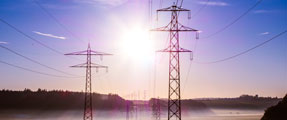On August 10, 2015, the Ninth Circuit Court of Appeals (Ninth Circuit) rejected a challenge to the Federal Energy Regulatory Commission’s (FERC) decisions finding that Bonneville Power Administration’s (BPA) policies discriminated against wind generators. The Ninth Circuit did not address the merits of the appeal, but found that the BPA’s wholesale preference customers did not have statutory standing to challenge FERC’s decision.
BPA’s preference customers are public power entities like cooperatives, peoples’ and public utility districts, and municipal utilities. The Ninth Circuit’s opinion will have the practical effect of limiting BPA’s preference customers’ ability to challenge FERC’s policies regarding certain aspects of BPA’s transmission operations.
BPA has been faced with “oversupply” situations in which it has more electric generation than load on its system. The federal government is required to operate its hydroelectric facilities to be consistent with environmental laws and to promote fish survival, which can result in the need to run water through its turbines and generate power. BPA has historically given this electricity away for free to the region’s utilities, which would accept the power and turn off or down their own fossil fuel powered generation facilities. More recently, a large number of wind generators have been built in the Northwest and many of them use BPA transmission service. These wind generators, however, do not want to accept BPA power to displace their own generation, because they would no longer be eligible to receive certain tax credits or sell renewable energy certificates associated with the power generation. BPA decided to displace or curtail the wind generators power with its own hydroelectric generation, and the wind generators sought FERC review of BPA’s decision.
FERC concluded that BPA violated the Federal Power Act, because BPA’s decision resulted in non-comparable transmission service that unfairly treats non-Federal wind generating resources connected to BPA’s transmission system. FERC’s conclusion was the first time that Section 211A of the Federal Power Act was applied to a traditionally non-jurisdictional transmission provider like BPA. BPA then revised its policies and complied with FERC’s orders by compensating wind generators for their power displacements, and allocating the costs to all of its transmission customers, including its preference utility customers. BPA’s preference customers appealed FERC’s decisions to the Ninth Circuit.
The Ninth Circuit did not address the substance of FERC’s decisions, but concluded that the preference customers did not have statutory standing to challenge FERC’s actions. Standing is a limitation on the ability of a party to challenge agency decisions. The Ninth Circuit explained that, to satisfy constitutional standing requirements, a party must establish injury in fact, causation, and redressability. In addition, a party must demonstrate that they are within the zone of interest protected by the statute that they are using to challenge to the agency’s decision.
The Ninth Circuit concluded that BPA’s customers had constitutional standing. First, the court found that the preference customers were harmed by increased energy prices that would result from FERC’s orders. Second, causation was established because FERC’s decision prompted BPA’s actions that increased their energy prices. Third, the preference customers’ harm could be redressed in the form of lower electricity rates, because BPA could revert to its previous policy if the FERC orders were invalidated.
The Ninth Circuit, however, found that the preference utility customers had not established statutory standing because they were not within the zone of interest protected by Section 211A of the Federal Power Act. Section 211A was designed to foster an open and competitive energy market by promoting access to transmission services on equal terms. Ninth Circuit concluded that the interests of BPA’s preference energy customers did not align with these goals. The court explained that these customers sought seek to reduce BPA’s costs. This goal was, at best, “orthogonal” to the purposes of a statutory provision intended to increase access to transmission markets and could be diametrically opposed to the statute’s purposes of promoting open access.
BPA Opinion can be found HERE
Disclaimer
These materials are intended to as informational and are not to be considered legal advice or legal opinion, nor do they create a lawyer-client relationship. Information included about previous case results does not assure a similar future result.


